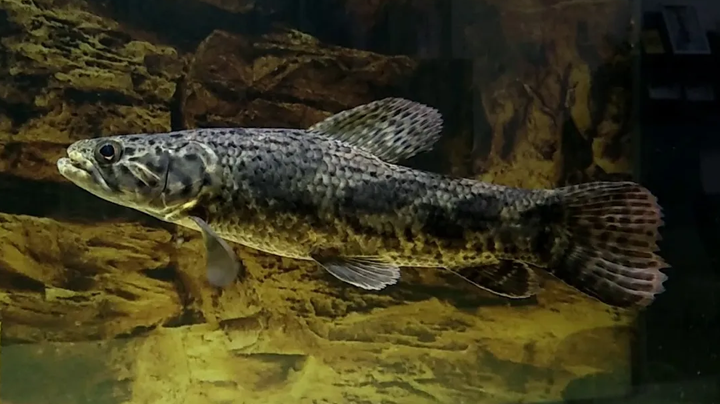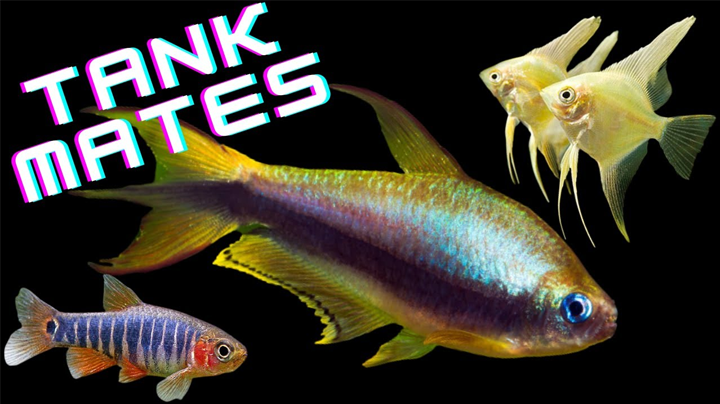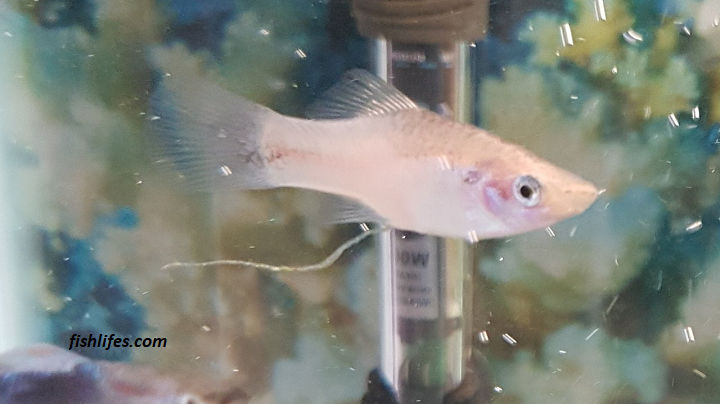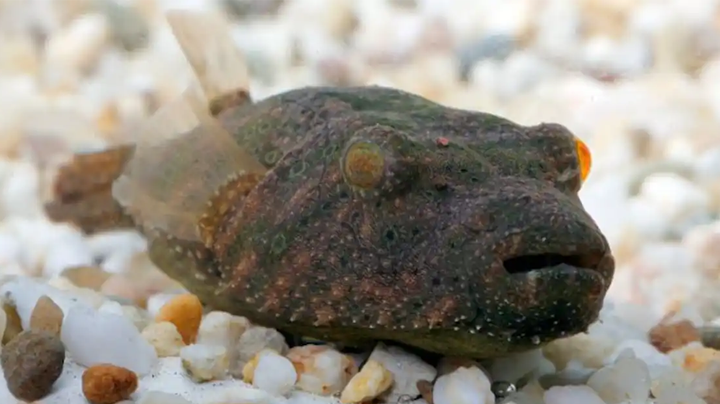Hoplias Aimara fish, also known as the voracious fish, is a unique species of predator that has been gaining popularity in home aquariums. Not only is it a stunning addition to any tank, but its aggressive and territorial nature makes it an exciting fish to watch. The Hoplias Aimara is often compared to the notorious piranha due to its size and voracious appetite for other fish and invertebrates.
Wolf fish, commonly known as Hoplias Aimara, is often considered the most fearsome freshwater fish in the world. It has an intimidating look with its sharp teeth and long body. These factors have caused many aquarists to shy away from owning one due to their reputation for being aggressive and challenging to care for. However, aquarists brave enough to give this species a chance soon discovered that Hoplias Aimara was not as ferocious as they had believed.

When properly cared for, this fish proved to be quite timid and even peaceful when kept in tankmates of similar size or larger. Thanks to these discoveries, some keepers are now daring enough to house them in multiple specimens or even with other fish species. Wolf fish may still be intimidating, but they can make great additions to any aquarium if given proper care and attention.
What Is Hoplias Aimara?
The Hoplias genus of the Characoid subfamily belongs to the Erythrinidae family of fishes. Scientists classify this species as a ‘tiger fish’ due to their predatory behavior and aggressive nature. This fish is known for its ability to hunt in freshwater and saltwater environments, making it an excellent game for anglers worldwide.
They are best recognized by their tiger-like stripes that span down their lateral line, and their wide mouths with sharp teeth allow them to capture prey easily. Hoplias also have a unique swimming pattern where they move quickly through the water with powerful strokes of their tails and undulating body movements.
The species grows up to 20cm in length and is found in both slow-moving and fast-flowing streams. On the other end of the size spectrum, Hoplias Aimara can reach lengths of 130cm and weigh more than 40kg. This species prefers still waters such as lakes and lagoons but can also be found in larger rivers with slower currents. Both species are primarily piscivorous, meaning they feed mainly on fish but will also eat insects and crustaceans when available.

The Hoplias Aimara, an ancient species of fish, can be found across the northern region of South America in countries such as Brazil, Colombia, Venezuela, Guyana, French Guiana, Suriname, and the island of Trinidad. This fish species is mainly found inhabiting freshwater environments like rivers and lakes but has also been known to inhabit brackish water in areas with significant tidal movements. It is a large predatory species that feed on other smaller fish and aquatic animals.
In Amazonia, native populations are increasingly concerned by high levels of mercury contamination caused by artisanal and small-scale gold mining. This type of mining is carried out in many countries worldwide, but it presents a particular threat to the fragile ecosystem of Amazonia.
The Andean catfish, Aimara (Diplomystes nahuelhuapensis), is a good bioindicator of contamination due to its high-level position in the food web structure. As a predatory fish, it feeds on other aquatic animals and is therefore exposed to any contaminants found in its bodies. This makes Aimara an ideal organism for monitoring water quality, as higher predator organisms are typically more at risk from exposure to toxicants than primary consumers.
Aimara is an elongated cylindrical-shaped fish found in various locations across the globe. Primarily, this fish inhabits freshwater environments and is known for its unique coloring, which varies from place to place. Generally, Aimara has a light brown base color with dark patches throughout their body. However, the number and size of these patches often differ depending on their location.
How Big Do Hoplias Aimara Get?
The Hopalias Aimara is a large fish species notable for its impressive size. With an average length of nearly 30 inches, the fully grown Hopalias Aimara is among the largest freshwater fish known to science. Even more remarkable, however, are the specimens that reach 120 cm in length and 40 kg in weight. This species has been found in rivers throughout Central America and achieves its impressive size by growing up to seven times larger than most other freshwater fish species.
Is Hoplias Aimara Aggressive?
The Hopalias Aimara species is a type of fish that can quickly become the star of any aquarium. This species is known for its incredible beauty and bright colors, but unfortunately, they are also incredibly aggressive. They should never be kept with other fish in the same tank unless the aquarium is large. If not, these fish will kill or severely injure nearly any tankmate it shares space with.
This aggressive behavior has caused many aquarists to rethink keeping this species in their tanks. It’s important to remember that even if an aquarium is large enough to house multiple types of fish, there’s still no guarantee that the Hopalias Aimara won’t attack them.
Hoplias Aimara Behavior
This intriguing creature is well-known for its predatory hunting habits and distinctive features like its fierce-looking teeth and muscular body shape. During the nighttime, they become most active in their search for prey. They typically use a combination of ambush tactics and fast swimming bursts to catch unsuspecting victims.
As an ambush predator, the Hoplias Aimara uses its powerful sense of smell to detect potential prey items in its environment, such as other fish species. When it senses a suitable target nearby, it hides behind submerged objects like rocks or logs and then rapidly plunges forward with great speed to capture whatever comes within range. They can also employ chasing techniques if their initial attempts at an ambush fail.

The Hoplias Aimara is an opportunistic feeder. As its name suggests, it has been observed to feed on other animals that fall into the water, such as terrestrial invertebrates. This behavior has enabled it to become one of the most successful predators in its ecosystem.
Its diet mainly consists of aquatic insects and crustaceans such as copepods and amphipods. Studies have also highlighted that this species eats some small vertebrate prey, including tadpoles and even baby fish. They have even been known to scavenge for small pieces of organic material, which can sometimes be found floating on the surface or at the bottom of rivers or ponds. However, they are primarily active during nighttime when they move around looking for suitable prey.
It is one of only a few species of fish that can do this, allowing it to live in environments with low oxygen levels. This unique ability is due to its specialized gill structure and individual physiology.
The Hopalas Aimara can be found in the rivers and streams of central Africa, specifically from South Sudan to Cameroon. Even though they are well adapted for living in low-oxygen environments, they still need access to atmospheric oxygen intermittently for respiration. They have been observed rising to the water’s surface and gulping air when their environment becomes particularly low in oxygen.
How Long Does Hoplias Aimara Live?
When it comes to the Hoplias Aimara, there is no definite answer on how long this species can live in either the wild or captivity. We know that other members of the Hoplias genus tend to live for around 20 years when kept and cared for properly.
Studies dedicated to this particular species are limited, but research shows that it has an average lifespan of between 7-10 years in the wild. The key factor in determining how long a Hoplias Aimara lives seems to be its environment and care. When kept in a tank with adequate oxygen levels and clean water and fed the correct diet, these fish can quickly reach their expected average lifespan of 10 years or more.
Hoplias Aimara Care
Hoplias Aimara Size
At full maturity, the average size of a fully grown individual of this species is around 30 inches (76.2 cm). However, the largest recorded capture was over 4 feet long. It has been recently recognized for its impressive size and strength, with the International Game Fish Association (IGFA) awarding it the world’s largest rod and reel record at an incredible 101 cm. Not only this, but they have also been known to reach lengths of over 50cm in aquariums, with some specimens even growing much larger than this. However, larger specimens will probably attain sizes of 80 cm and up if the tank is large enough.
Hoplias Aimara Tank Size
When considering keeping Hoplias Aimara in an aquarium environment, aquarists must understand their size requirements. A fully grown individual of this species will need a tank with at least 300 gallons of capacity due to its large adult size. Furthermore, they are best kept solo or in pairs due to their aggressive nature and territoriality. Since they inhabit deeper waters, they should be kept with substrates such as sand or gravel that provide ample hiding spots.
Recent studies have found that individuals over 30cm/12″ are difficult to keep in standard tanks due to their size and strength. The powerful suction of the Wolf Fish’s mouth is such that it can easily rip up tank linings and decorations during its search for food, so it is best kept in an acrylic tank or other reinforced tank of over 100 cm/40″.
How Many Should Hoplias Aimara Be Kept Together?
When determining how many to keep together, it is recommended that you start with just one male and one female. Keeping just a pair ensures they can bond without having too much competition or aggression from other Hoplias Aimara in the tank. A single couple can live peacefully together for their entire lives as long as they are given plenty of space and hiding places.
Tank Setup
Tank Size
One of the best ways to provide a good environment for these species is through a 300-gallon open aquascape. This habitat provides plenty of room and allows the fish enough space to swim freely without feeling cramped or crowded.
Substrate
Hoplias Aimara inhabits fast-flowing rivers and rapids in their natural environment, where they prefer more active and running water conditions. Hoplias Aimara is a powerful predator with a muscular body built for speed and agility in the water. Their large mouths are lined with razor-sharp teeth that make them capable of taking down larger prey.
Decoration
Driftwood is one of the most creative ways to decorate an Aimara tank. Not only does it provide a natural background for the fish, but it also adds a unique texture and structure to the aquarium. Driftwood is incredibly versatile; you can use pieces of wood in different shapes and sizes to create interesting compositions that draw attention from viewers.
When using driftwood for an Aimara tank, ensure that the piece has been adequately treated with boiling water or boiled vinegar. This will help remove tannins and bacteria living on the surface, which could harm your fish if left untreated. Additionally, take care when placing driftwood in your tank so that it doesn’t impede the movement of your fish or block their line of sight while swimming around.
Filter
The Hoplias Aimara fish is a challenging species to care for, as most commercially available filters cannot keep up with its aggressive behavior and size. It needs powerful filtration systems and pumps, which can be expensive and difficult to find. Owners must also consider providing extra hiding places for the other tank occupants since Hoplias Aimara is known for relentlessly chasing after its prey.
Water Quality Condition
The Hoplias Aimara inhabit rivers, streams, and lakes with fast-moving water. This species of wolffish prefers this environment over still water because they can find more food sources when the water is moving quickly.
Hoplias Aimara can be very sensitive when it comes to poor water conditions, and they require clean, oxygenated waters to survive. These fish can quickly become ill if exposed to polluted waters or if the temperature becomes too warm. Therefore their habitat must be regularly monitored for any signs of contamination or changes in temperature.

To ensure a healthy aquatic environment for its inhabitants, it is important to maintain the proper pH and temperature range. Generally, freshwater aquariums’ preferred or acceptable pH range is between 6.5 and 7.5, while the preferred temperature range should be between 78 and 82 degrees Fahrenheit (F).
In addition to being crucial for fish health, this desired pH and temperature range also helps promote beneficial biological filtration in an aquarium. This includes systems such as nitrification, which breaks down toxic ammonia into less harmful nitrate. The denitrification then helps break down nitrate into nitrogen gas which can be released safely from your tank’s water surface. Keeping your system within these ranges allows you to create a healthier environment for your aquarium inhabitants.
Hoplias Aimara Breeding
Hoplias Aimara Male Or Female Identification
Sexual dimorphism is an important biological characteristic that can be observed in many species. It has been found that Hoplias Aimara, a freshwater fish belonging to the family Eschyniidae, also exhibits sexual dimorphism. This particular species of fish display a distinct difference in the size and shape of its anal fin between males and females.
The male Hoplias Aimara have noticeably larger and more pointed anal fins compared to those of female specimens. The distal margin is elongated, with pointed lobes absent in the female specimens. Additionally, its inner rays are shorter than the outer rays on the male’s anal fin, while they are equal in length on the females’ fins. These differences make it possible to identify gender by carefully inspecting this particular morphological feature.
One of the most distinguishing characteristics of Hoplias Aimara is its anal fin. In males, when this fin is projected forward of the fish’s body, its surface takes on the shape of a spoon or shell. This peculiar shape has earned this species the nickname “Wolf Fish” or “Shell Wolf” in some areas.
One interesting feature of the Hoplias Aimara is that in female specimens when the anal fin is projected forward of the fish body, it remains flat instead of having an outwardly curved shape like most other species. This unique adaptation helps to distinguish this species from others and makes them easy to identify in their natural habitats. Furthermore, this physical attribute improves their ability to maneuver quickly in tight spaces while searching for food or evading predators.
Identify Pregnant Hoplias Aimara
As females mature, they develop a more robust shape with a rounded stomach. This visible physical change is the first signal they are ready to begin reproducing—the female body changes in preparation for carrying and nurturing a developing fetus and providing nutrition through lactation.
A larger abdomen develops due to the growth of reproductive organs and the accumulation of fat reserves, which will provide vital energy during pregnancy and nursing. Hormonal changes also cause an increase in breast size, further developing over time after giving birth. Both males and females experience an increase in sex drive during this maturity period when their bodies are ready for reproduction.
The physical changes associated with maturity enable both sexes to reproduce and propagate their species, ensuring its survival for generations.

Hoplias Aimara Breeding
One interesting fact about this species is that their reproduction occurs at the onset of the rainy season from December to March, carrying around 6,000 to 60,000 eggs.
The female Hoplias Aimara produces large amounts of eggs, which one or more males then fertilize. The female typically releases her eggs into shallow waters near shore, and after fertilization, they drift away in search of food and nutrients for development. These eggs have a relatively short incubation period compared to many other species and survive only with proper oxygen flow and moderate acidity levels.
How Many Babies Does Hoplias Aimara Have?
The Hoplias Aimara is an incredibly abundant species of fish. It’s known to have one of the most significant quantities of offspring per spawning session, with up to 10,000 fries (baby fish). With its impressive ability to produce such high numbers of young during each spawning season, it’s no wonder this fish has become so popular amongst anglers. The key to successful fishing for these critters lies in knowing when and where they will spawn – which can be tricky considering their elusive behavior!
Hoplias Aimara Fry Care
During their fry and juvenile stages, Hoplias Aimara displays a truly omnivorous diet and can feed on anything from zooplankton, insects, and crustaceans to aquatic plants.
Feeding Behavior Of Hoplias Aimara
What Do They Eat
This species is classified as a piscivore; however, they are highly adaptable animals that consume nearly anything which falls into their habitat, including insects, crustaceans, and molluscs. As an opportunistic predator, Hoplias Aimara has been observed to feed on small terrestrial animals, such as frogs and lizards, which happen to fall into the water.
Small fish are the main diet of Aimara in the wild. In aquariums, however, these predators will attempt to eat any other fish they can fit into their mouths. This can cause severe problems since they do not have any natural checks or balances on their food intake in captivity. Their poor eating habits make them unsuitable for most home aquariums as they could easily consume all other fish kept with them – thus making it impossible for hobbyists to maintain a balanced environment suitable for many species of aquatic life.
The Hoplias Aimara is an aggressive carnivore that loves to eat live prey such as worms, crickets, and small shrimp. However, they will also accept dry foods such as pellets, freeze-dried shrimp, or insects.
How Often Should You Feed
This fish species is known for its voracious appetite and ability to overgrow in captivity. While it is essential to feed Hoplias Aimara regularly, there is no need to feed them every day. The feeding frequency will depend on the size of the individual fish.
For smaller specimens three inches or less, feeding can be reduced to once per week with no adverse effects. For medium-sized Hoplias, Aimara (three inches up to six inches), they should be fed twice a week as long as their diet consists of high-quality food sources like frozen bloodworms and brine shrimp.
When Should You Feed (Time Of The Day)
When it comes to feeding your Hoplias Aimara, it is best to provide them when it is dark or at night. This is because these nocturnal predators rely on darkness to hunt for food. During the day, they will rest in hiding spots or caves where they can remain hidden from potential predators. At night, however, they come out of hiding searching for food and become more active than usual. Therefore, by providing them with an evening meal, you can ensure that they get enough nutrition while keeping their natural habits intact.
How Long They Can Go Without Food
These can stay without food for a long time and survive as they are predators and do not hunt daily. They use their energy reserves to sustain themselves while they wait for the right opportunity to hunt.
These fish tend to feed on other small species, relying heavily on their sharp teeth and agile swimming capabilities to catch their prey. Even if they fail to grab something, they will use the energy stored in their body until the next hunting opportunity arises. Because Hoplias Aimara has such an efficient survival system, they remain undisturbed by those who may wish them harm or disrupt their natural habitat.
Is Hot Glue Toxic To Turtles? (No, But You Should Know This)







